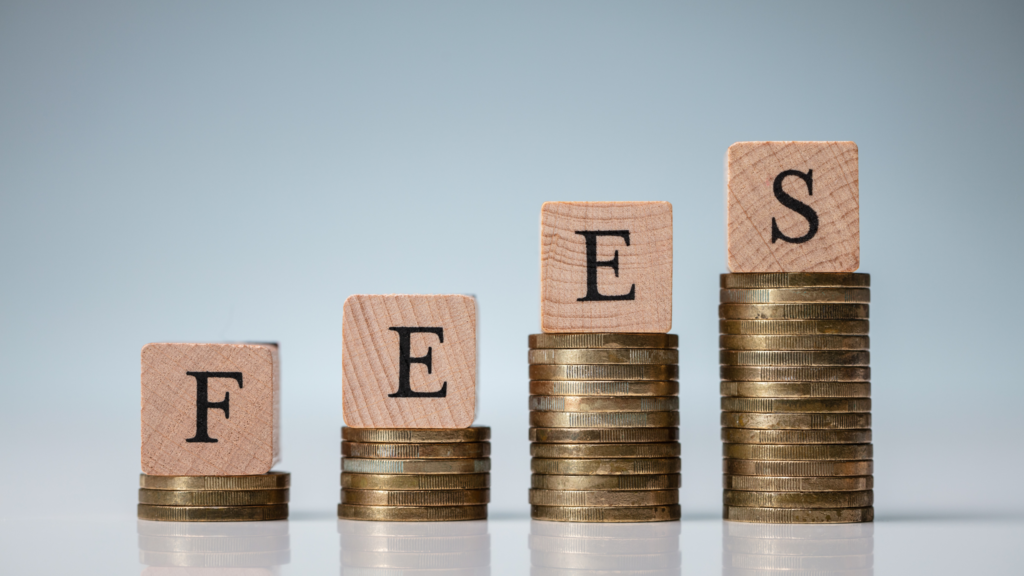“A penny saved is a penny earned.” But in the world of investing, it’s more like a penny saved is a dollar earned. Why? Because fees compound just like returns. And when it comes to ETFs (Exchange-Traded Funds), even small fees can have a big impact on your long-term gains.

Let’s break down how ETF fees work and why you should pay attention to every cent.
ETF Fees: The Silent Portfolio Killer
When you invest in an ETF, you’re not just buying into a basket of stocks or bonds. You’re also paying for the privilege of having someone manage that basket for you. These costs are reflected in what’s called the expense ratio, and it’s a key metric you need to watch.
The average expense ratio for index ETFs is around 0.41% as of 2024, but some can be as low as 0.05% or as high as 1% depending on the fund type. That may not sound like much, but over time, it adds up—big time.

What Exactly Is an Expense Ratio?
The expense ratio is a percentage of your total investment that goes toward covering the fund’s operating costs. This includes:
- Management fees: Paying the people who run the fund.
- Administrative costs: Keeping the lights on and the paperwork flowing.
For example, if you invest $10,000 in an ETF with a 0.40% expense ratio, you’re paying $40 per year in fees—automatically deducted from your returns.
Actionable Tip: Look for ETFs with expense ratios below 0.40%. Anything higher could eat into your returns unnecessarily.
Small Fees, Big Impact
Here’s where things get interesting—and a little scary.
Let’s say you invest $10,000 in an ETF with a 0.50% expense ratio and expect an annual return of 7%. After 20 years, your investment would grow to about $38,697. But if that expense ratio were just 0.10%, your investment would grow to $40,995. That’s over $2,000 more simply by choosing a lower-cost ETF!
Why Does This Happen?
It’s all about compounding. Just like your returns compound over time, so do your fees. Every dollar you pay in fees is a dollar that isn’t working for you. Over decades, this can make a huge difference.
Actionable Tip: Use online calculators to see how different expense ratios will affect your long-term returns.
Other Sneaky Costs to Watch For
While the expense ratio is the most obvious cost, it’s not the only one. Here are some other fees that can chip away at your returns:
- Brokerage commissions: Some brokers charge fees when you buy or sell ETFs.
- Bid-ask spread: The difference between what buyers are willing to pay and what sellers are asking for can cost you money when trading.
- Taxes: Depending on where you live and what type of account you use, taxes can take another bite out of your returns.

Actionable Tip: If possible, use commission-free brokers to minimize these additional costs.
The Total Cost of Ownership (TCO)
When evaluating an ETF, don’t just look at the expense ratio—consider the total cost of ownership (TCO). This includes both holding costs (like the expense ratio) and transaction costs.
For long-term investors, holding costs matter more because they compound over time. But if you’re frequently buying and selling ETFs, transaction costs can quickly add up.
Actionable Tip: If you’re planning to hold an ETF for years or decades, prioritize low expense ratios. For shorter-term strategies or frequent trades, pay close attention to transaction costs.
Are Higher Fees Ever Worth It?
In most cases with passively managed ETFs, higher fees are rarely justified. These funds are designed to track an index with minimal intervention from managers, which means their operating costs should be low by nature. Paying more for a passively managed ETF often doesn’t make sense unless there’s something unique about its structure or underlying assets.
That said, always compare similar ETFs before making a decision—some funds might charge slightly more due to factors like liquidity or specialized exposure that could benefit your portfolio.
Actionable Tip: Stick with low-cost passively managed ETFs unless there’s a compelling reason to choose one with higher fees (for example, exposure to niche markets).
Final Thoughts: Keep Your Eye on Fees
In investing, every dollar counts—and nowhere is this truer than with ETF fees. A seemingly small difference in expense ratios can lead to thousands of dollars more (or less) in your pocket over time.
So before you hit “buy” on that next ETF investment:
- Check the expense ratio.
- Consider any additional transaction costs.
- Think about how long you’ll hold the investment.
By keeping fees low and letting compounding work its magic, you’ll maximize your chances of long-term success!
Actionable Tip: Regularly review your portfolio’s fee structure and make adjustments if necessary—your future self will thank you!
Disclaimer: The information provided in this article is for educational and informational purposes only and should not be construed as financial advice. Investing in the stock market carries risks, including the potential loss of principal. Before making any investment decisions, it is essential to conduct thorough research and consider consulting with a qualified financial advisor. Additionally, please note that investment platforms and brokers may have specific terms, conditions, and fees that should be carefully reviewed before opening an account or executing trades.